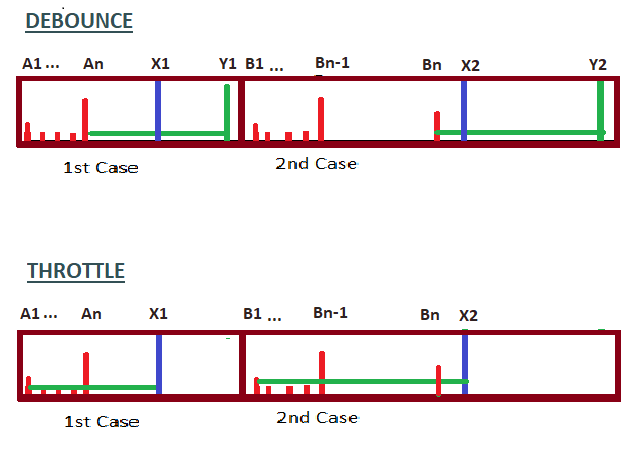What are the Common Causes of JavaScript Errors ? How to Avoid Them?
- The Tech Platform

- Sep 8, 2021
- 7 min read
Updated: Jun 2, 2023

JavaScript is a widely used and essential programming language for web development. It has evolved significantly, with the introduction of libraries, frameworks, and server-side platforms. JavaScript brings interactivity and dynamism to the web, making it vibrant and engaging.
While JavaScript may seem easy to grasp initially, it has become more complex and powerful over time. Even experienced developers can make mistakes that result in unexpected outputs or application failures. Therefore, it's important to be aware of common JavaScript mistakes and learn how to avoid them.
In this article, we'll explore some of the most frequent mistakes made by JavaScript developers and provide tips on preventing these errors. By understanding and addressing these issues, developers can write more reliable and efficient JavaScript code for their web applications.
Common JavaScript Errors:
ERROR 1: Syntax Errors
Syntax-based errors occur when the JavaScript interpreter encounters code that does not adhere to the standard syntax of the programming language. These errors are reported by the interpreter when it identifies tokens that do not match the expected syntax. Common examples of syntax errors include missing parentheses or failing to provide an argument to a function. Here's an example of JavaScript code that demonstrates a typical syntax error:
function greet(name {
console.log("Hello, " + name);
}
greet("John");
In the above code, the opening parenthesis is missing after the parameter name in the function declaration. This results in a syntax error, as the code does not conform to the correct syntax.
To fix this issue, the missing parenthesis should be added, like this:
function greet(name) {
console.log("Hello, " + name);
}
greet("John");
By ensuring that the code follows the proper syntax rules, developers can avoid syntax errors and ensure that their JavaScript code is executed correctly.
Syntax-based errors can be prevented by acquiring a solid understanding of the grammatical rules specific to JavaScript (and other programming languages). By familiarizing yourself with these rules, you can minimize the occurrence of grammatical mistakes in your code. The more you practice coding, the more proficient you become in avoiding such errors and producing error-free code.
To avoid syntax errors, it is essential to study and comprehend the syntax rules of JavaScript. This involves understanding the correct placement of parentheses, brackets, commas, semicolons, and other syntactic elements. Additionally, you should learn about the correct usage of keywords, operators, and function declarations.
ERROR 2: Case Sensitivity Errors
JavaScript is a case-sensitive programming language, meaning that variables and functions with different capitalization are treated as distinct entities. It is common for developers to make mistakes related to case-sensitivity, which can be easily overlooked. To avoid introducing bugs in your program, it is crucial to ensure consistent capitalization throughout your code.
When naming variables and functions in JavaScript, it is important to follow best practices for naming conventions. Here are some guidelines to consider:
Variables in JavaScript are case sensitive: Pay attention to the capitalization of variable names. For example, "role" and "Role" are considered as two separate variables.
Use descriptive names: Choose variable names that clearly describe their purpose. This improves code readability and makes it easier for other developers to understand your code.
Use lowerCamelCase for multi-word variables: When a variable name consists of multiple words, use lowerCamelCase notation. Begin with a lowercase letter, and capitalize the first letter of each subsequent word. For example, "myVariableName" or "studentAge".
Function names should also use lowerCamelCase: Follow the same convention for naming functions. Start with a lowercase letter and capitalize the first letter of each subsequent word. Ensure that the function name accurately describes its purpose.
Here's an example that demonstrates the naming conventions:
// Variables
var userName = "John"; // LowerCamelCase for multi-word variable
var age = 25; // Lowercase for single-word variable
// Function
function calculateSum(a, b) { // LowerCamelCase for function name
return a + b;
}
console.log(userName); // Output: John
console.log(age); // Output: 25
console.log(calculateSum(5, 10)); // Output: 15In the example, the variable userName follows the lowerCamelCase convention as it consists of multiple words. The variable age is a single-word variable, so it is written in lowercase.
The function calculateSum is named using lowerCamelCase and describes its purpose accurately. It takes two parameters, a and b, and returns their sum.
ERROR 3: Inefficient DOM Manipulation Errors
When manipulating the Document Object Model (DOM) on a web page, it is important to ensure that the process is efficient and effective. JavaScript provides various methods for DOM manipulation, but it's crucial to consider the performance implications. Let's examine an example to illustrate this concept:
var myDiv = document.getElementById("example_div");
var fragment = document.createDocumentFragment();
for (var e = 0; e < elements.length; e++) {
fragment.appendChild(elements[e]);
}
myDiv.appendChild(fragment.cloneNode(true));In the example, we have a target div element with the id "example_div" that we want to append multiple elements to. Instead of directly adding each element to the DOM, we optimize the process using a document fragment.
A document fragment allows us to temporarily hold a collection of elements in memory without them being attached to the DOM. This detached state helps improve performance during manipulation. We create a document fragment using document.createDocumentFragment().
Then, in the loop, we append each element to the document fragment using fragment.appendChild(elements[e]). This efficiently adds the elements to the fragment without modifying the DOM.
Finally, we attach the modified document fragment to the target div element using myDiv.appendChild(fragment.cloneNode(true)). The cloneNode(true) method creates a deep copy of the fragment and attaches it to the DOM. This step effectively adds all the elements to the DOM in a single operation, reducing the number of interactions with the DOM and improving performance.
By detaching elements first and then using document fragments to efficiently manipulate the DOM, we can optimize the process and enhance the performance of our web page.
ERROR 4: Improper Usage of Undefined or Null Errors
Working with undefined and null in JavaScript can be challenging for developers, leading to undesired output and errors. Let's discuss these concepts further.
null is an assignment value used to indicate the absence of an object. Surprisingly, in JavaScript, null is considered an object itself. Here's an example of assigning null to a variable and checking its type:
const example = null;
console.log(example); // Output: null
console.log(typeof example); // Output: objectOn the other hand, undefined signifies that a value hasn't been assigned to a declared property or that nothing has been declared. Consider the following example:
var example;
console.log(example); // Output: undefined
console.log(typeof example); // Output: undefinedInterestingly, when comparing null and undefined using the equality (==) and identity (===) operators, you would observe the following behavior:
console.log(null == undefined); // Output: true
console.log(null === undefined); // Output: falseUnderstanding the proper use of null and undefined can help developers avoid mistakes in their JavaScript programs.
ERROR 5: Undefined Method Errors
Another common error in JavaScript programs occurs when calling an undefined method. This error typically arises when a function is called before it has been defined. Let's consider an example that triggers an undefined method error:
userProfile = {
name: "Peter",
age: 27,
printMyName() {
console.log(this.name);
}
};
userProfile.printMyAge(); // Error: userProfile.printMyAge is not a functionIn the above code, an error is thrown because the printMyAge() function is not defined, even though it is being called.
ERROR 6: Improper Usage of Return Errors
The return statement is used to terminate the execution of a function and provide the value to be returned to the calling function. Improper usage of the return statement can lead to performance issues in the application. Consider the following example:
function doMultiplication(a, b) {
var result;
return; // Incorrect usage of return
result = a * b;
}
console.log(doMultiplication(10, 4)); // Output: undefinedIn the above code, the return statement is placed before the multiplication operation, causing the function to terminate prematurely. The correct way to write this code is to place the return statement after the multiplication operation, ensuring that the calculated result is returned.
ERROR 7: Incorrect Variable Name Errors
A common mistake made by JavaScript programmers is using reserved words as variable names. JavaScript has more than 60 reserved words that cannot be used as variable names in your program.
For instance, "new" is a reserved word in JavaScript. If you attempt to use it as a variable name, it will cause a syntax error. To avoid this, it's recommended to choose a more descriptive name that does not conflict with reserved words. For example, instead of using "new" as a variable name, you can use "newValue" or "newCalculatedValue" to maintain clarity and avoid ambiguity.
Here's an example to illustrate this:
// Incorrect usage of reserved word
var new = 5; // Syntax error: Unexpected token 'new'
// Correct usage with descriptive variable name
var newValue = 5;
var newCalculatedValue = 10;
console.log(newValue); // Output: 5
console.log(newCalculatedValue); // Output: 10In the above example, using "new" as a variable name causes a syntax error. To resolve this, we've chosen alternative variable names, "newValue" and "newCalculatedValue," which are more descriptive and avoid conflicts with reserved words.
ERROR 8: Referencing DOM Before it is Loaded Error
The Document Object Model (DOM) is crucial for building web interfaces and manipulating web pages. Many JavaScript errors are related to DOM, and referencing the DOM before it is loaded is a common mistake.
To better understand this type of error, consider the following code:
<!DOCTYPE html>
<html>
<body>
<script>document.getElementById("myDiv").innerHTML = "Discussing common JS errors";
</script>
<div id="myDiv"></div>
</body>
</html>When executing the above code, it will produce the following error:
Uncaught TypeError: Cannot set property 'innerHTML' of null
at index.html:8This error occurs because JavaScript executes code in the order it appears in the document. When the code is executed, it doesn't recognize the div element with the id 'myDiv' since it appears later in the code.
There are various methods to handle such scenarios, including:
1. Placing JavaScript code at the bottom of the HTML file: By moving the JavaScript code to the bottom, the DOM elements will be loaded before the script executes.
<!DOCTYPE html>
<html>
<body>
<div id="myDiv"></div>
<script>document.getElementById("myDiv").innerHTML = "Discussing common JS errors";
</script>
</body>
</html>2. Using the onload event: Wrap the JavaScript code in a function and call that function using the onload event, ensuring that the code executes only after the DOM has loaded.
<!DOCTYPE html>
<html>
<body onload="myFunction()">
<div id="myDiv"></div>
<script>function myFunction()
{
document.getElementById("myDiv").innerHTML = "Discussing common JS errors";
}
</script>
</body>
</html>By applying these methods, you can avoid referencing the DOM before it is loaded and prevent related JavaScript errors.
How to Avoid the Errors?
Understanding a programming language is crucial for improving application performance and productivity. Knowing how the language works helps in writing efficient code, avoiding errors, and debugging effectively. It enables better decision-making for data structures and algorithms. On the other hand, lacking understanding can lead to mistakes and suboptimal performance. Familiarity with the language ecosystem enhances development. Overall, knowing the language nuances is vital for successful web application development.




Comments